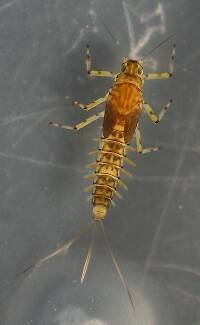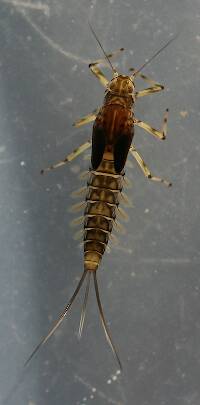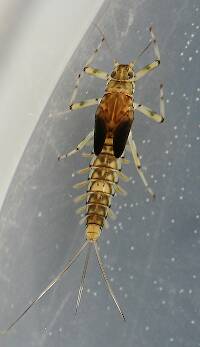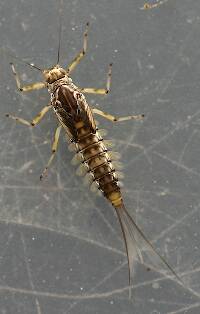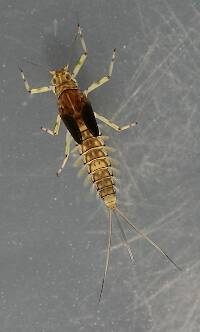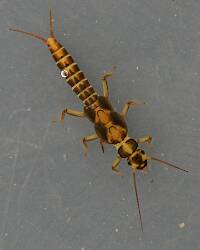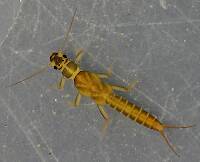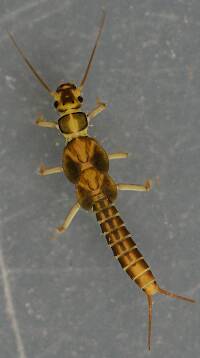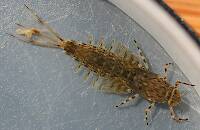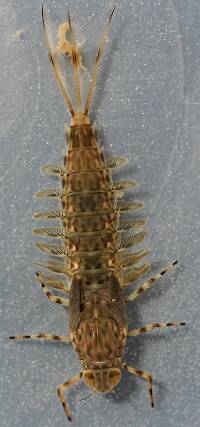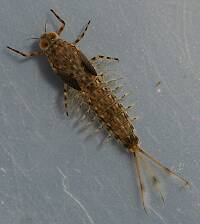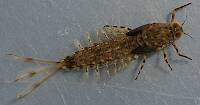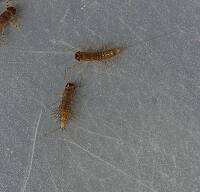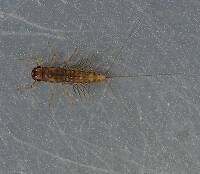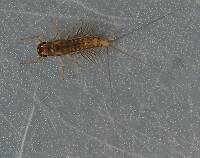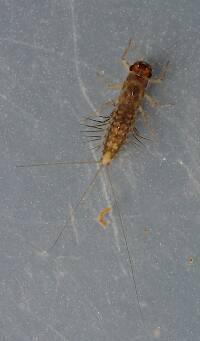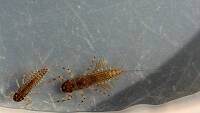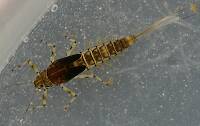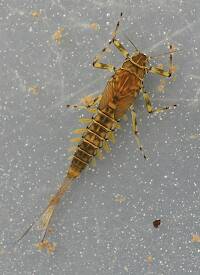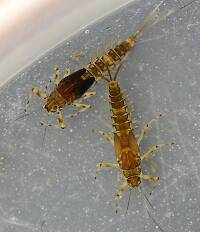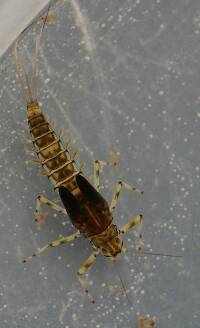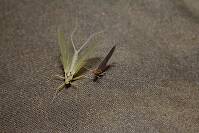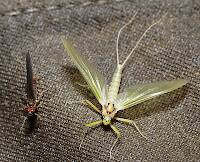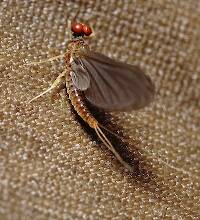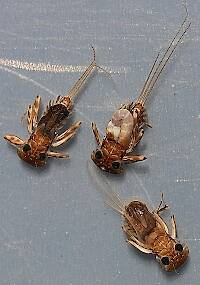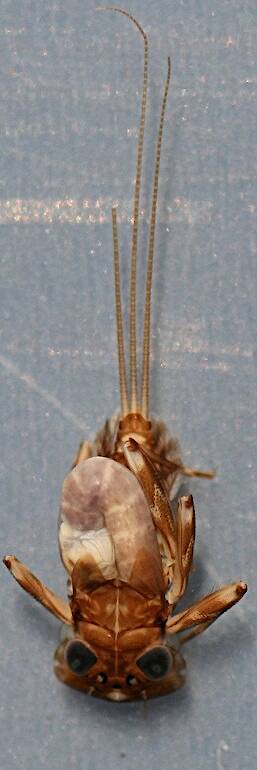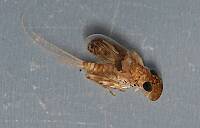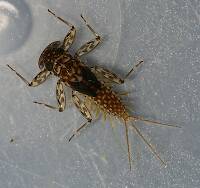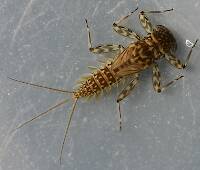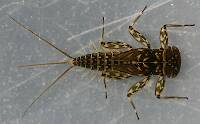
Blue-winged Olives
Baetis
Tiny Baetis mayflies are perhaps the most commonly encountered and imitated by anglers on all American trout streams due to their great abundance, widespread distribution, and trout-friendly emergence habits.
Featured on the forum

This one seems to tentatively key to Holocentropus, although I can't make out the anal spines in Couplet 7 of the Key to Genera of Polycentropodidae Larvae nor the dark bands in Couplet 4 of the Key to Genera of Polycentropodidae Larvae, making me wonder if I went wrong somewhere in keying it out. I don't see where that could have happened, though. It might also be that it's a very immature larva and doesn't possess all the identifying characteristics in the key yet. If Holocentropus is correct, then Holocentropus flavus and Holocentropus interruptus are the two likely possibilities based on range, but I was not able to find a description of their larvae.

Troutnut is a project started in 2003 by salmonid ecologist Jason "Troutnut" Neuswanger to help anglers and
fly tyers unabashedly embrace the entomological side of the sport. Learn more about Troutnut or
support the project for an enhanced experience here.
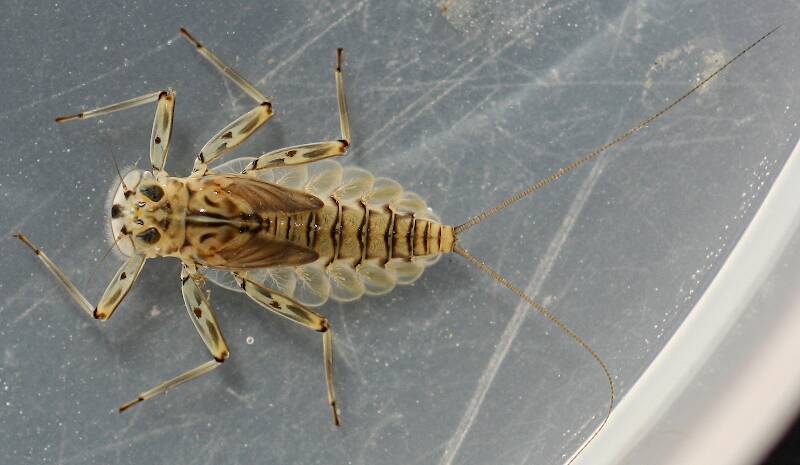
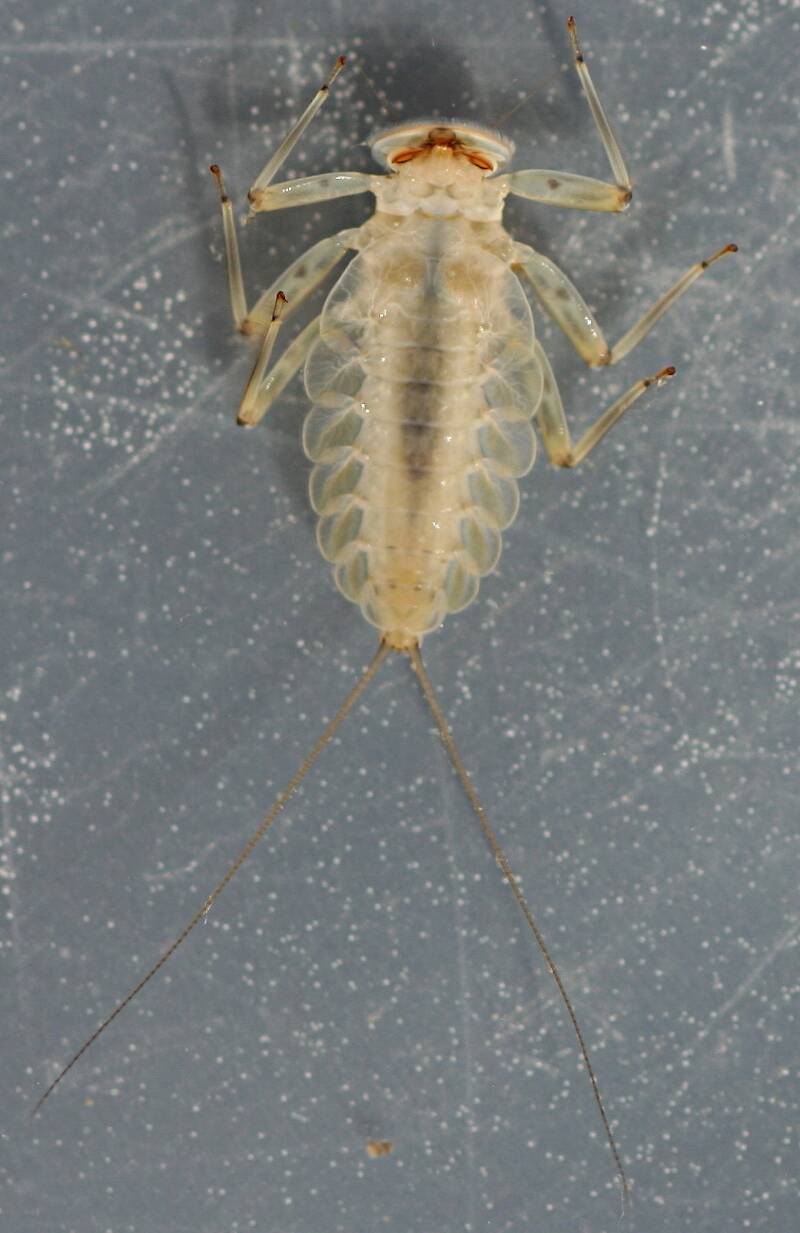

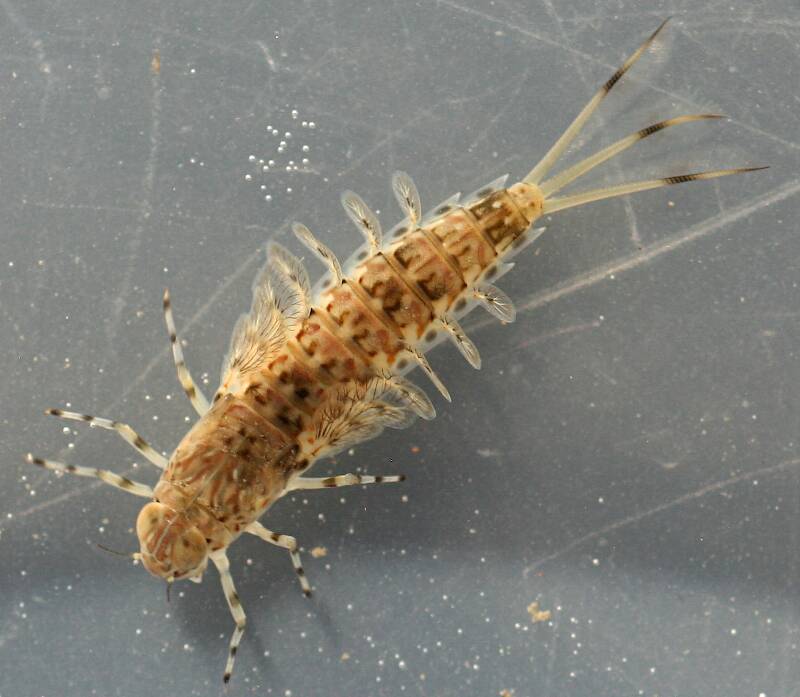
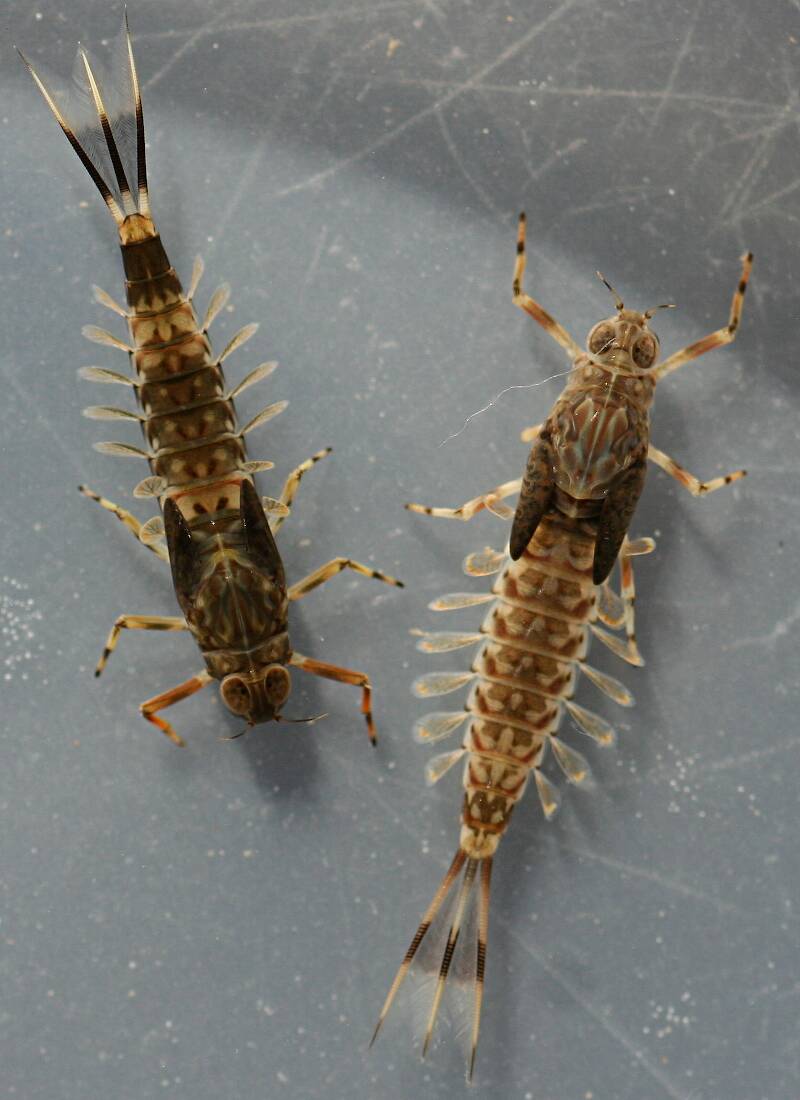
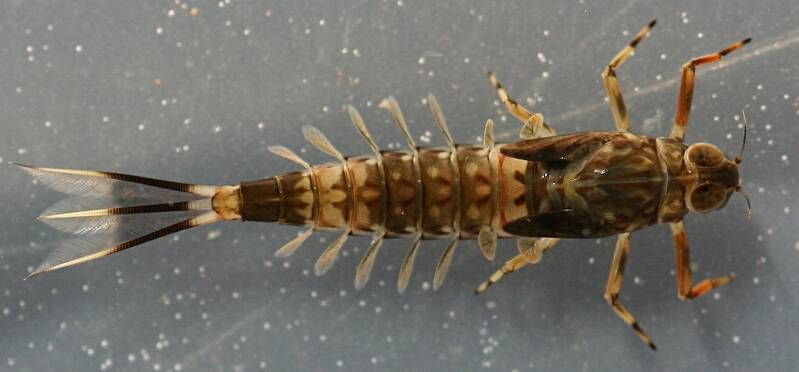
Millcreek on Mar 8, 2015March 8th, 2015, 7:45 am EDT
The Russian River is starting to pick up in terms of critters. First is Epeorus longimanus, followed by a Siphlonurus sp. Last are a couple of Ameletus sp.
Any ideas about the specific name of the Siphlonurus sp. would be greatly appreciated.
Any ideas about the specific name of the Siphlonurus sp. would be greatly appreciated.
"If we knew what it was we were doing, it would not be called research, would it?"
-Albert Einstein
-Albert Einstein
Oldredbarn on Mar 17, 2015March 17th, 2015, 6:50 am EDT
Who said we haven't been visited by aliens?! Those first two are for sure visitors from somewhere else...It's not "The truth is out there", it's "The truth is hiding in our rivers"...:)
Spence
Nice photos! Thanks!
Spence
Nice photos! Thanks!
"Even when my best efforts fail it's a satisfying challenge, and that, after all, is the essence of fly fishing." -Chauncy Lively
"Envy not the man who lives beside the river, but the man the river flows through." Joseph T Heywood
"Envy not the man who lives beside the river, but the man the river flows through." Joseph T Heywood
Millcreek on Mar 18, 2015March 18th, 2015, 10:12 am EDT
It's a good deal more likely that they see us as aliens. They've been around a good deal longer and probably look on us as the bipedal pinkies who periodically bother them.:)
You're welcome.
Nice photos! Thanks!
You're welcome.
"If we knew what it was we were doing, it would not be called research, would it?"
-Albert Einstein
-Albert Einstein
Jmd123 on Mar 18, 2015March 18th, 2015, 6:25 pm EDT
Hey, Heptageniids are cool and they know it...
Nice photos of some very pretty creastures, once agin!
Jonathon
Nice photos of some very pretty creastures, once agin!
Jonathon
No matter how big the one you just caught is, there's always a bigger one out there somewhere...
Oldredbarn on Mar 18, 2015March 18th, 2015, 9:27 pm EDT
It's a good deal more likely that they see us as aliens.
No doubt! :)
Spence
"Even when my best efforts fail it's a satisfying challenge, and that, after all, is the essence of fly fishing." -Chauncy Lively
"Envy not the man who lives beside the river, but the man the river flows through." Joseph T Heywood
"Envy not the man who lives beside the river, but the man the river flows through." Joseph T Heywood
Hansolo
Posts: 2
Posts: 2
Hansolo on Jun 4, 2016June 4th, 2016, 10:28 am EDT
Just bought house on Russian river. Love seeing mayflies hugging the doorframes in the early mornings. Reminds me of the east coast where I used to fly fish the Farmington and housatonic year-round.
When gardening I see insects in the dirt I've never seen before anywhere. They look like mayfly nymphs. They are anywhere from a millimeter to an inch long. They look like all-brown versions of Baetis nymphs, skinny, compact, perhaps 2 tails. They crawl over rocks, my planters, the dirt, anywhere.
Are there such things as terrestrial mayfly nymphs that live their entire lives close to rivers but on land?!?
If so, what variety are they? I want to create a ceramic address/nameplate at bottom of my driveway with a sketch of one of these things. Thanks.
When gardening I see insects in the dirt I've never seen before anywhere. They look like mayfly nymphs. They are anywhere from a millimeter to an inch long. They look like all-brown versions of Baetis nymphs, skinny, compact, perhaps 2 tails. They crawl over rocks, my planters, the dirt, anywhere.
Are there such things as terrestrial mayfly nymphs that live their entire lives close to rivers but on land?!?
If so, what variety are they? I want to create a ceramic address/nameplate at bottom of my driveway with a sketch of one of these things. Thanks.
Creno on Jun 4, 2016June 4th, 2016, 11:21 am EDT
Hansolo - my wife once said earwigs looked like mayfly nymphs.
https://en.wikipedia.org/wiki/Earwig
https://en.wikipedia.org/wiki/Earwig
Quick Reply
Related Discussions
Topic
Replies
Last Reply
12
Feb 18, 2008
by Boerie
by Boerie
5
Jan 11, 2015
by Entoman
by Entoman
4
Sep 27, 2014
by Millcreek
by Millcreek




